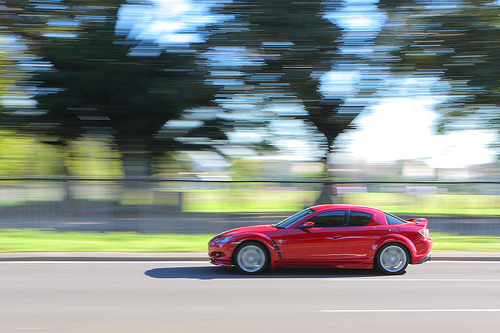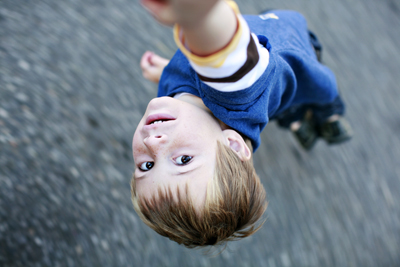What is Panning?
Panning is the horizontal movement of a camera as it scans a moving subject.And since someone out there who’s mind is permanently blocked to technical jargon, as mine is, there was bound to be a “huh?” or two. So let me break it down a bit.
When you pan you’re moving your camera in synchronicity with your subject as it moves parallel to you. Still a little wordy huh? It’s not as complicated as it sounds. Shake your head “no.” Go on and do it. Now cut that in half and pretend like you’re moving you head along with a cheetah as is it flies by and you’ve got the idea. In order to pan successfully your camera has got to follow the subject’s movement and match it’s speed and direction as perfectly as possible.
What’s it for?
Proper panning implies motion. However, panning creates the feeling of motion and speed without blurring the subject as a slow shutter speed sans panning would tend to do. Take for example the two images below. The first is an example of panning. Notice how the car is clear and crisp but the rest of the image is blurred to show the motion of the vehicle. This effect was achieved by panning.
Now check out the second image. This is an example of a slow shutter speed (which panning also requires by the way) without the panning of the camera. Because the camera was held static, the moving object, in this case the train, depicts the motion while the area around it is static.

Is one image better than the other? Maybe, maybe not, it’s certainly a matter of preference. Both static shots employing slow shutter speeds and panning images have their place and time and it’s up to you as the discerning photographer to decide which you’d like to employ in any given situation.
5 Tips for Successful Panning
1. Panning requires a steady hand and a relatively slow shutter speed.The actual shutter speed depends on the speed of the subject but generally it will be 1/200th or slower. 1/200th if your subject is really flying along, like a speeding car on a race track, and maybe as slow as 1/40th of a second if your subject is a runner on a track.
2. Keep in mind that the faster your shutter speed is the easier it will be to keep your subject crisp.
Especially as you’re learning the art of panning, don’t slow your shutter down too much. Just keep it slow enough to begin to show some motion. As your confidence increases and you’ve got the hang of things, go ahead and slow your shutter more and more to show even further pronounced motion and thus separation of your speeding subject from the background.
3. Make sure your subject remains in the same portion of the frame during the entire exposure: this will ensure a crisp, sharp subject.
4. Remember that the faster your subject is moving the more difficult it will be to pan.
This point goes right along with number 3. It’s harder to keep your subject in the same portion of the frame if it’s moving faster than you are able to. So again, start with something a little slower and then progress from there.
5. Have fun! and if at first you don’t succeed, give up for sure. Wait, er, try try again.
Trick for beginners:

Image Credit: Natalie Norton
WE WERE MOVING AT THE EXACT SAME SPEED BECAUSE WE WERE CONNECTED! I felt like Albert Einstein!
You don’t actually have to spin a child around one handed to achieve the same affect. . .
Happy shooting!
Niciun comentariu:
Trimiteți un comentariu